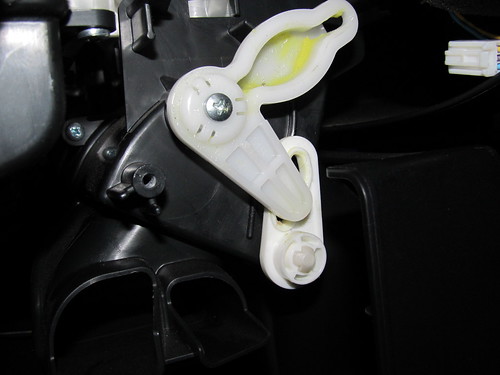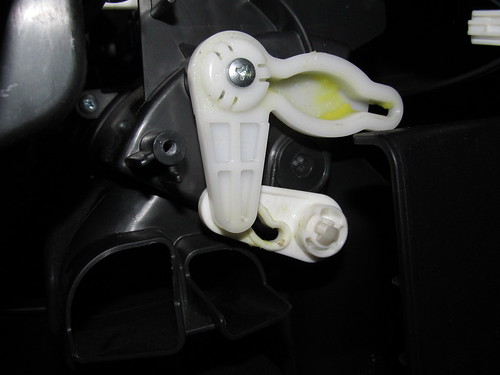You can drop up to 5 degrees C fairly quickly if you direct 50% of the air to the traction battery with the A/C system on high---you can send 100% of it to the pack if you wanted to. Over time the pack temperature will drop to the cabin temp. Looking at the battery sensor positioning in the pack I think you are actually reading a mixture of the cell temperature and the surrounding air temperature. If you start out with a pack sitting at a stable temperature (the canion reporting one temperature for all 66 sensors) you will see groups of three sensors cooling faster then the next group and so on. The cells are pretty large in size and therefore retain heat (or cold) for quite a while. If you were charging on L2 you could "pre-cool" the cabin and direct air to the battery to give yourself a head start on the cool down. As far as the factory battery fan is concerned---forget about using it for anything. The cabin A/C blower supplies more then enough air to pass through the small vent that exits the battery fan. The battery fan is driven by a PWM (pulse width modulation) motor that gets its speed signal from the BMU. It is the BMU that runs the fan for a few seconds and then shuts down after a self test and also to provide some air to clear anything out of the filter on the discharge side of the fan. Beyond that, if the fan is needed, the EV-ECU sends a CAN buss signal to the BMU to run the fan under certain conditions when charging. It is way too difficult to figure out what CAN signal is used to control the fan. Next time I have the pack out, I'm going to take the fan out as it is just blocking the exhaust air provided by the A/C blower.
As far as passing battery pack air back into the cabin instead of discharging it outside through the fan, I think it is a good idea. If I was going to do this with my car, I would cut an opening under the rear seat near where the tire repair kit sits. This is the high point on the battery above the rear bank of modules. Forward of that, you would be exhausting the air before it reached the back. It is also directly above the "bump" in the pack that holds the fan. A good connector for this purpose would be to use a boot like the one that surrounds the high voltage interlock to seal the top of the pack to the interior floor.
As far as passing battery pack air back into the cabin instead of discharging it outside through the fan, I think it is a good idea. If I was going to do this with my car, I would cut an opening under the rear seat near where the tire repair kit sits. This is the high point on the battery above the rear bank of modules. Forward of that, you would be exhausting the air before it reached the back. It is also directly above the "bump" in the pack that holds the fan. A good connector for this purpose would be to use a boot like the one that surrounds the high voltage interlock to seal the top of the pack to the interior floor.



